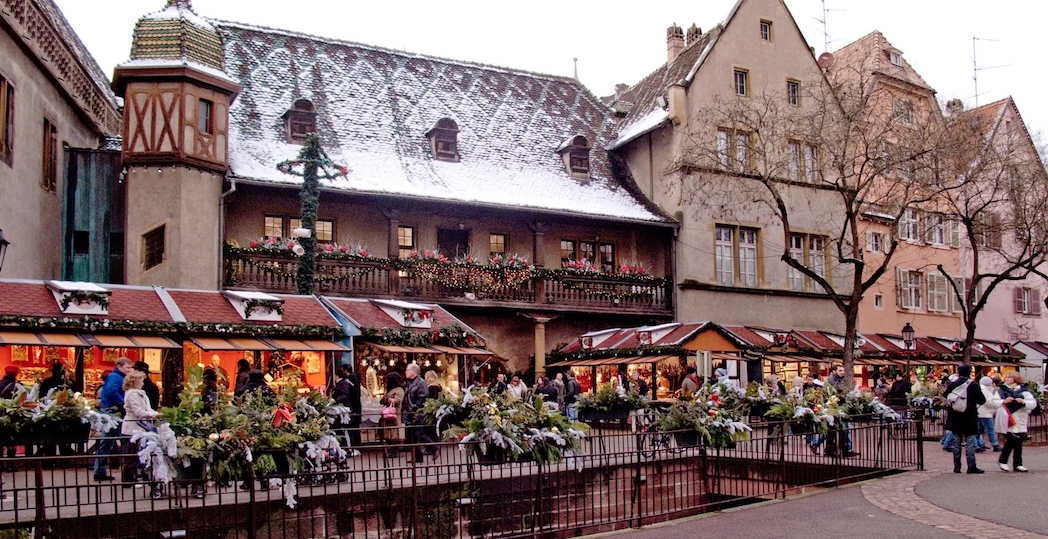Oysters and more oysters – but no Christmas carols, crackers or cards. Napoleon secularised France. There are unsophisticated decorations in the streets and shop windows and a bowl of sweets or chocolates out for customers on most counters. Before we came to Gascony our Hong Kong Christmases were tinselly, turkeyed, commercial holidays. There were Brussel sprouts and the Queen’s Speech and the family rows that come with over-indulgence. Here it was cold and dark with an unforgettable, stark, candlelit midnight mass. That has now been brought forward, either due to the shortage of priests or because the Pope wanted to go to bed earlier. Children are judged to be old enough for mass when they stop believing in Father Christmas.

Nativity scenes are the original French tradition with old and new clay figurines from Provence called santons, some of which are kept in families for generations. Les Baux de Provence, now known for l’Oustau de la Baumanière, one of the finest restaurants in the country, was initially famous for its living nativity scene. It dates from the 16th century, with real shepherds and lambs and even a new-born Christ in the manger. In the North, the scene is set in a rocky cave with the Virgin Mary and St Joseph and a donkey and ox, whose breath warmed the baby. Further south, they are in an open barn with straw and pine branches. In a friend’s large family everyone has their own lamb figurine and every day the best-behaved children can move their lambs closer to the Christ Child. Most churches have an annual nativity scene and many homes devote a whole room to theirs.

In Provence festivities have always begun on December 4, St Barbe’s Day, with sprouting wheat and lentils. On Christmas Eve they have seven ‘lean’ dishes followed by 13 desserts – nuts and nougat, dried and fresh fruits – that remain on the table until Epiphany. In the North, it is the 6th when St Nicholas brings gifts for good children and punishes naughty ones. Here in Gascony, it’s a joyous, overabundant family reunion, which begins late on Christmas Eve. Friends who didn’t go to mass used to go dancing, but now they all sit around opening gifts. Each member of the household puts their slippers, polished shoes or even clogs under the Christmas tree, so Father Christmas knows how many gifts to leave. Flour is sprinkled on the floor for children to see his footprints. A bowl of milk and a brioche are left out for him – and also a turnip and a carrot for the reindeer. The slippers may be filled with a tangerine, dried fruits and a square of chocolate for Father Christmas or, later on, by him for their owners. Santa Claus is believed to be a satanic American invention of Coca Cola’s, and Christmas trees are a relatively recent addition from the north. This year we haven’t yet decided between a Danish one whose needles don’t drop or a sweet-smelling spruce from the Vosges, but an Angel Gabriel by Ann Seddon, who was taught to make dolls by Mirka Mora in her Melbourne studio, will crown it.
We sit down late to oysters with grilled crépinettes made of sausage meat in hamburger shape, often with truffles, or boudin blanc, a fine-textured white pork sausage. Then come platters of prawns and lobster, followed by foie gras, before a turkey or capon or goose or even game. Vegetables are scorned, although there may be a few overcooked green beans with the roast and then a green salad with a small cheese board. Then comes the Christmas log. Marrons glacés and liqueur chocolates are served with the coffee, but nothing remotely resembles Christmas pudding. No one gets to bed much before 4 in the morning, and when we wake up it’s time for Christmas lunch!

Anglo-Saxon Christmases are often fraught with stress and heated arguments and blaring television in the background, whereas French ones tend to be calmer and more elegant, although political discussions can get tempestuous! In some homes an extra place is laid at the dining table in case a needy stranger should knock. A huge Yule log might be placed on the fire on Christmas Eve and expected to burn until New Year’s Day. I’m burning mine now though as the central heating is intermittent!
And then it’s over, there’s no public holiday on Boxing Day. Everyone goes straight back to work on the 26th and the next week is spent preparing for New Year’s Eve, when twice as much similar food will be consumed, and everyone will dance wildly and not go to bed at all. After that, there is Epiphany, when the Three Kings finally get to Bethlehem, celebrated with a galette des Rois, a puff pastry tart filled with almond cream containing a single bean or santon. It comes with a gold paper crown to be worn by whoever finds the hidden treasure. Decorations don’t come down until late in January – and then there is Candlemas to look forward to on February 2 when pancakes are served. By then it is almost spring.

